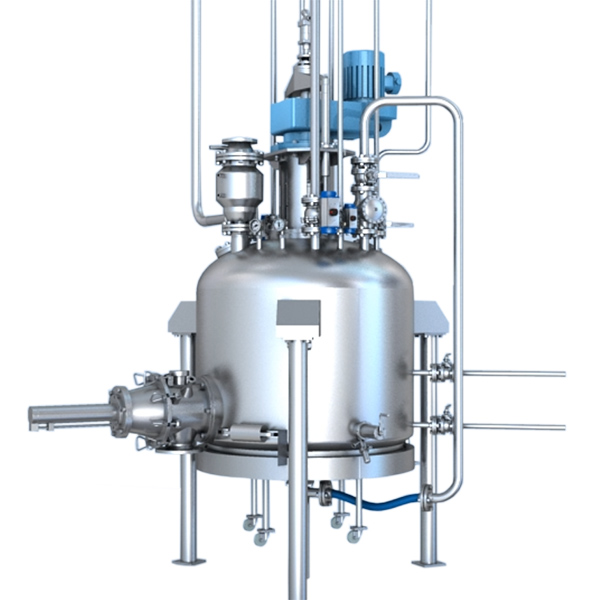
Worked Upto Range
1 KL – 75 KL
Agitated Filter is a closed vessel designed to separate solid and liquid by filtration under pressure or vacuum. The closed AGITATED NUTSCHE FILTER DRYER (ANFD) operation ensures odorless, contamination free and nonpolluting working conditions maintaining product purity and hygiene. The advanced technology of agitation and hydraulics used in the equipment makes it versatile and user friendly. The resulting wet cake can be reslurried and washed thoroughly with water or solvents unlike in” NUTSCHE” type filters or centrifuges. Wash liquid quantity can be controlled and recycled, reducing effluent load. The discharge of wet cake is automatic. If the process demands filtration in chilled or hot condition, it is also possible. Drying of wet cake is also possible when drying features are incorporated.
Worked Upto Range
0.5 KL – 5 KL
RCVD suitable for drying of materials which cannot resist high temperature, material which are easily oxidized, volatatile materials which should be retrieved, materials strong irritant and poisonous in nature. The roto cone dryer with improved technology integrates during operation under vacuum. The roto cone dryer facilitates enhanced drying efficiency, low temperature operation and economy of process by total solvent recovery. It helps cGMP based working by achieving optimum dust control, while offering advantages of efficient charging and discharging of materials. The drying unit equipped with lump breakers initially breaks large lumps and subsequently powders them (in single cone). The rotary action of the dryer together with mechanical action of the breakers cuts down drying time and gives a lump free product.
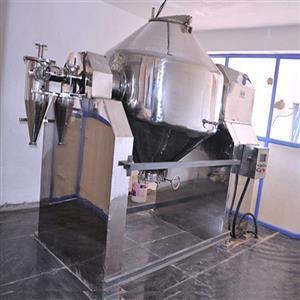
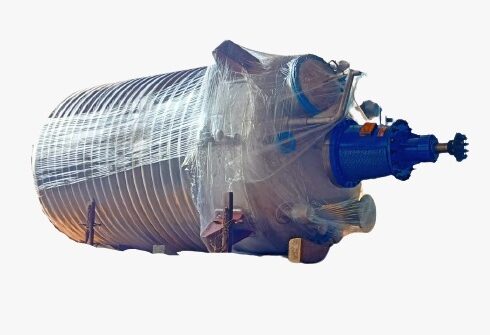
Worked Upto Range
5 KL- 20 KL, 30 kg design pressure
A hydrogenerator reactor is a key component of hydroelectric power plants. It converts the kinetic energy of flowing water into electricity through a process called electromagnetic induction. Water flows through a turbine, which turns a rotor connected to the reactor. As the rotor spins, it creates a magnetic field that induces an electric current in coils within the reactor, generating electricity.
Pre-engineered buildings (PEB) revolutionize industrial construction with their efficient design, rapid assembly, and cost-effectiveness. These structures are fabricated off-site and then transported for quick installation, offering flexibility, durability, and sustainability for various industrial applications. PEBs are tailored to meet specific project requirements, providing customized solutions that maximize space utilization and enhance operational efficiency.
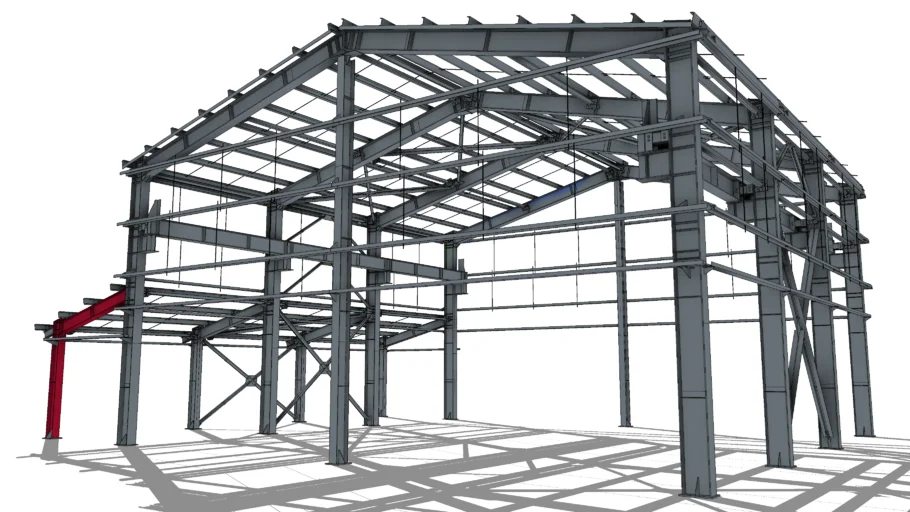
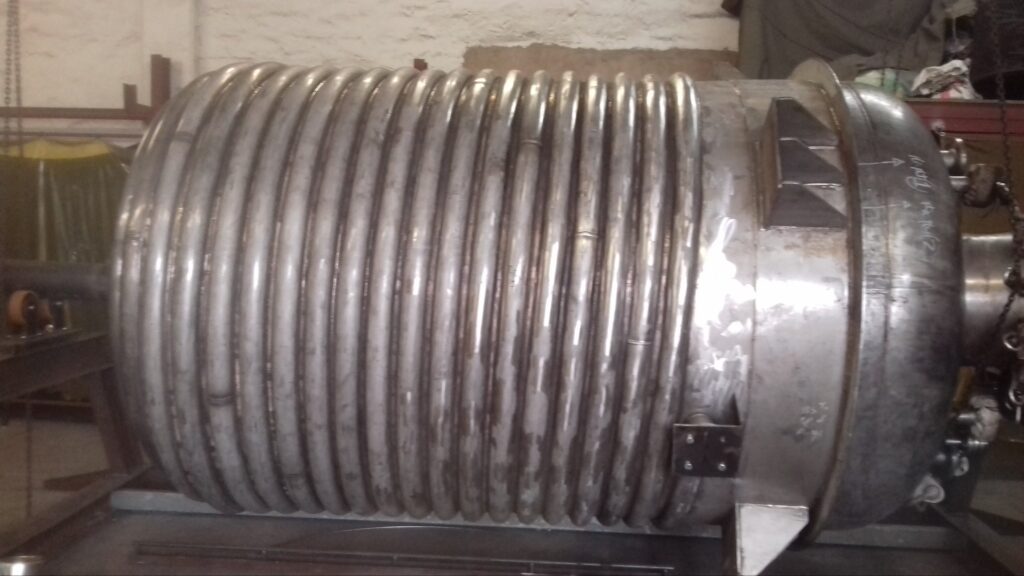
Worked Upto Range
1 KL- 51 KL
An M.S. (Mild Steel) reactor is a type of vessel commonly used in industrial processes for mixing, blending, or reacting materials. It is constructed from mild steel, which is known for its strength and affordability. M.S. reactors are versatile and can be employed in various applications across industries such as chemicals, petrochemicals, pharmaceuticals, and food processing. They are often used for processes involving moderate temperatures and pressures, where corrosion resistance is not the primary concern.
Worked Upto Range
100 KG – 10,000 KG
Fluid Bed Dryers (FBD) are primarily used in almost all chemical, pharmaceutical, food, dyestuff and other process industries to dry materials by fluidization with hot and / or dehumidified air, which creates a turbulence in the wet product (not totally liquid) while flowing through it. The atmospheric air is sucked in the dryer through 5/10 micron filter by efficient dynamically balanced fan driven by an electric motor.
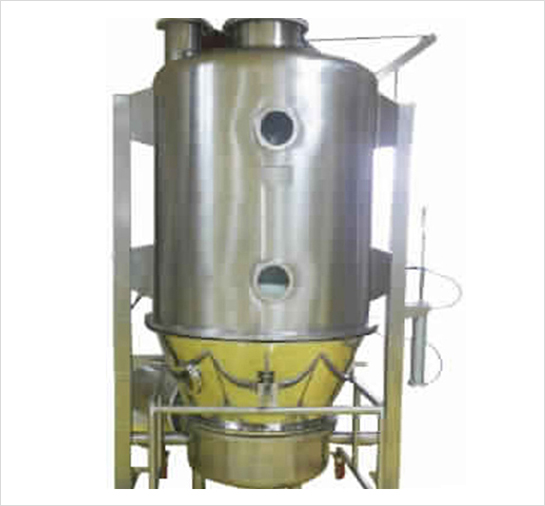
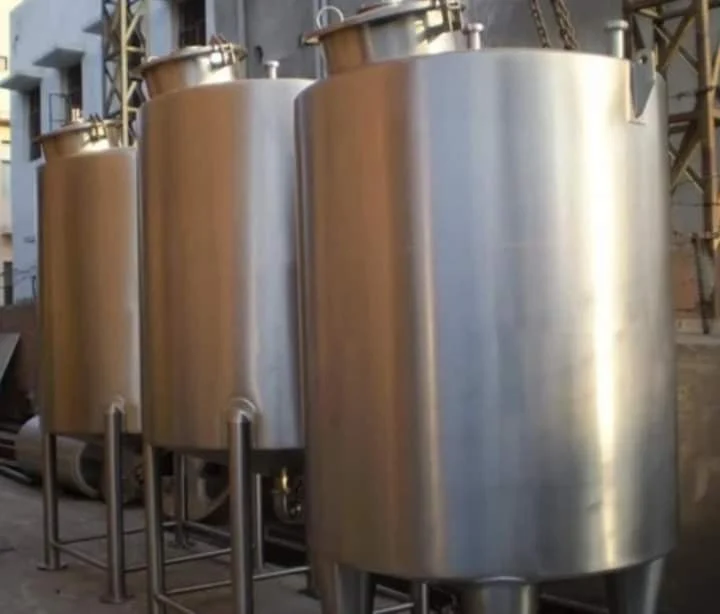
Worked Upto Range
1 KL – 100 KL
A storage tank is a container, usually for holding liquids, sometimes for compressed gases (gas tank). The term can be used for reservoirs (artificial lakes and ponds), and for manufactured containers
Worked Upto Range
50 Ltr- 2800 Ltr
In manufacturing plants within the pharmaceutical and chemical industries, a receiver serves as a crucial component in various processes. Primarily, it acts as a vessel or container designed to collect, store, or separate materials during production or chemical reactions. Receivers come in different forms and sizes, ranging from small-scale vessels to large tanks, depending on the specific application and volume requirements.
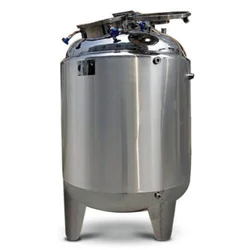
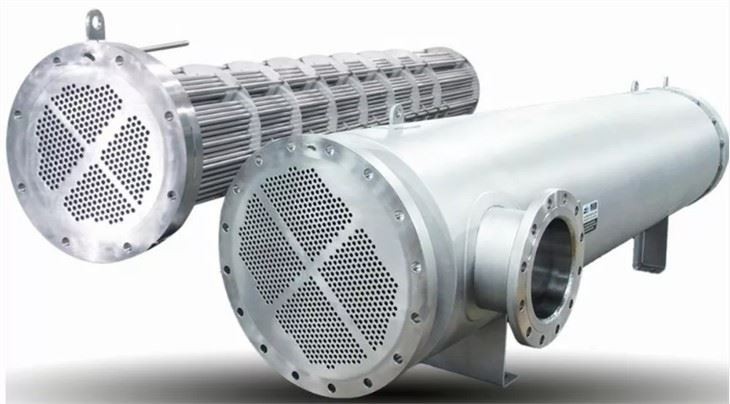
Worked Upto Range
2M2 -250M2
A shell and tube heat exchanger is a class of heat exchanger It is the most common type of heat exchanger in oil refineries and other large chemical processes, and is suited for higher-pressure applications. As its name implies, this type of heat exchanger consists of a shell (a large pressure vessel) with a bundle of tubes inside it. One fluid runs through the tubes, and another fluid flows over the tubes (through the shell) to transfer heat between the two fluids
Worked Upto Range
1M2 – 25M2
A box-type heat exchanger is a specialized equipment used in industrial processes to transfer heat from one fluid to another. Its design typically consists of a series of parallel plates or channels enclosed within a casing. Fluid flows through alternate channels, allowing for efficient heat transfer between the fluids without direct contact. These heat exchangers are commonly used in HVAC systems, refrigeration, chemical processing, and power generation. Their compact design and high heat transfer efficiency make them ideal for applications where space is limited or where precise temperature control is required.
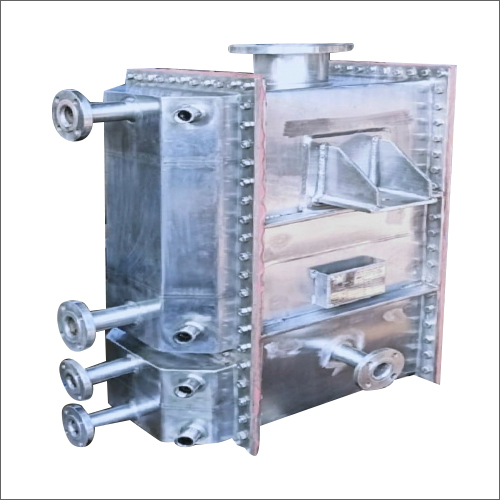
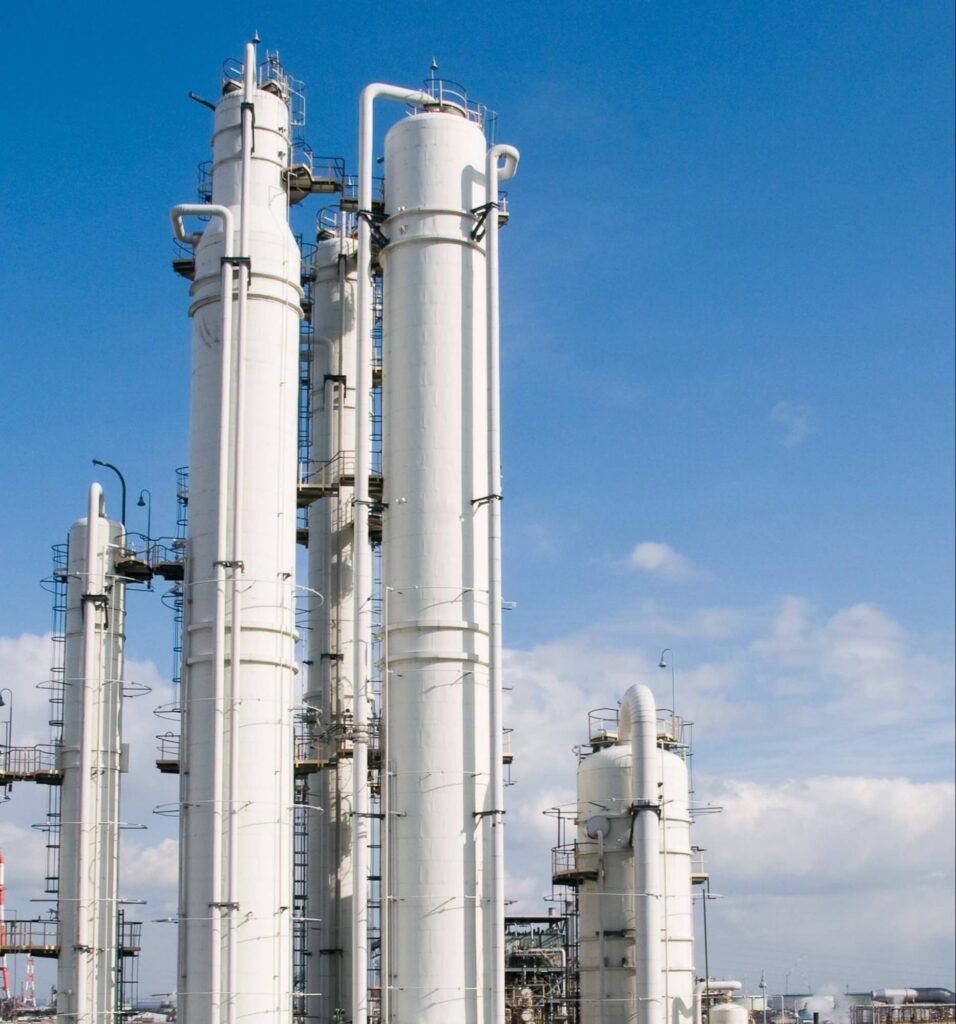
Worked Upto Range
1 Mtr – 24 Mtr Long
An industrial distillation column is a towering vertical structure used in various chemical processes to separate components of a liquid mixture based on their boiling points. It operates on the principle of fractional distillation, where the mixture is heated to vaporize its components, and then the vapors are condensed back into liquids at different heights within the column. As the vapors rise through the column, they come into contact with surfaces known as trays or packing materials, which facilitate the separation process by providing ample surface area for condensation and vaporization. Through repeated vaporization and condensation cycles, components with lower boiling points rise to the top of the column, while those with higher boiling points remain at the bottom, resulting in the desired separation.
Worked Upto Range
1 KL- 50 KL
An HDPE reactor refers to a reactor vessel specifically designed for the production of High-Density Polyethylene (HDPE). HDPE is a versatile thermoplastic polymer known for its high strength-to-density ratio, chemical resistance, and suitability for various applications, including packaging, piping, and construction materials. The HDPE reactor is a crucial component in the polymerization process of HDPE, where ethylene monomers are subjected to high temperature and pressure within the reactor, typically with the aid of a catalyst, to facilitate polymerization and produce the desired polymer chains. The reactor’s design and operation parameters are optimized to ensure efficient heat transfer, mixing, and polymerization kinetics, allowing for the production of high-quality HDPE resin with consistent properties.
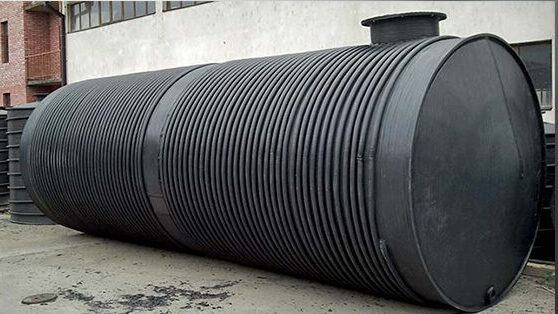
Worked Upto Range
1 KL- 51 KL
An HDPE (High-Density Polyethylene) Tank is a specialized reactor vessel that combines the strength and chemical resistance of HDPE with the durability of fiberglass reinforcement. This hybrid construction provides exceptional resistance to corrosion, impact, and wear, making it an ideal choice for industries dealing with harsh chemicals and demanding environmental conditions.
HDPE is a highly versatile thermoplastic polymer known for its excellent resistance to a wide variety of chemicals, including acids, alkalis, and solvents. It offers superior tensile strength and low moisture absorption, making it suitable for handling both corrosive and non-corrosive liquids.
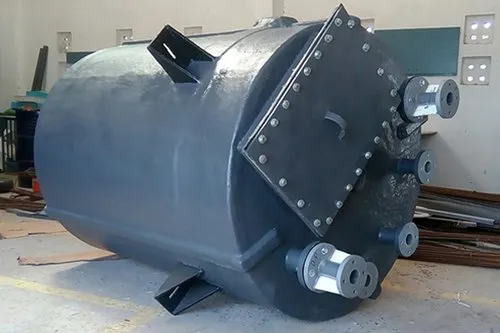
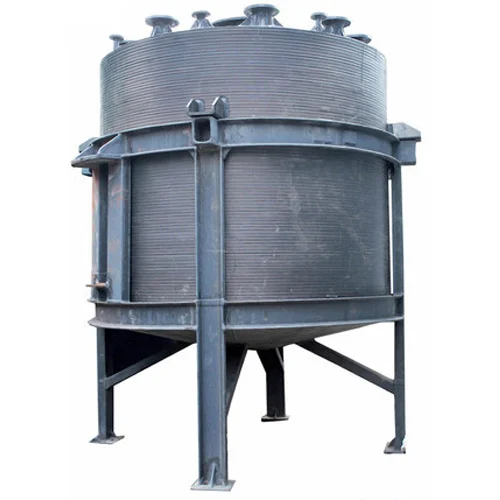
Worked Upto Range
1 KL- 51 KL
An HDPE-FRP reactor is a specialized type of reactor vessel that combines the properties of High-Density Polyethylene (HDPE) and Fiberglass Reinforced Plastic (FRP) materials. This hybrid construction offers unique advantages, particularly in industries where corrosion resistance, durability, and structural integrity are essential.
Stainless Steel (S.S.) and Mild Steel (M.S.) pipeline work involves the installation and maintenance of pipelines for industrial applications. These pipelines are essential for transporting fluids, gases, and other materials within manufacturing plants, refineries, and chemical processing facilities. The work includes fabrication, welding, testing, and inspection to ensure the integrity and safety of the pipelines. S.S. and M.S. pipelines are chosen based on factors such as corrosion resistance, pressure requirements, and environmental conditions, ensuring efficient and reliable operation within industrial settings.

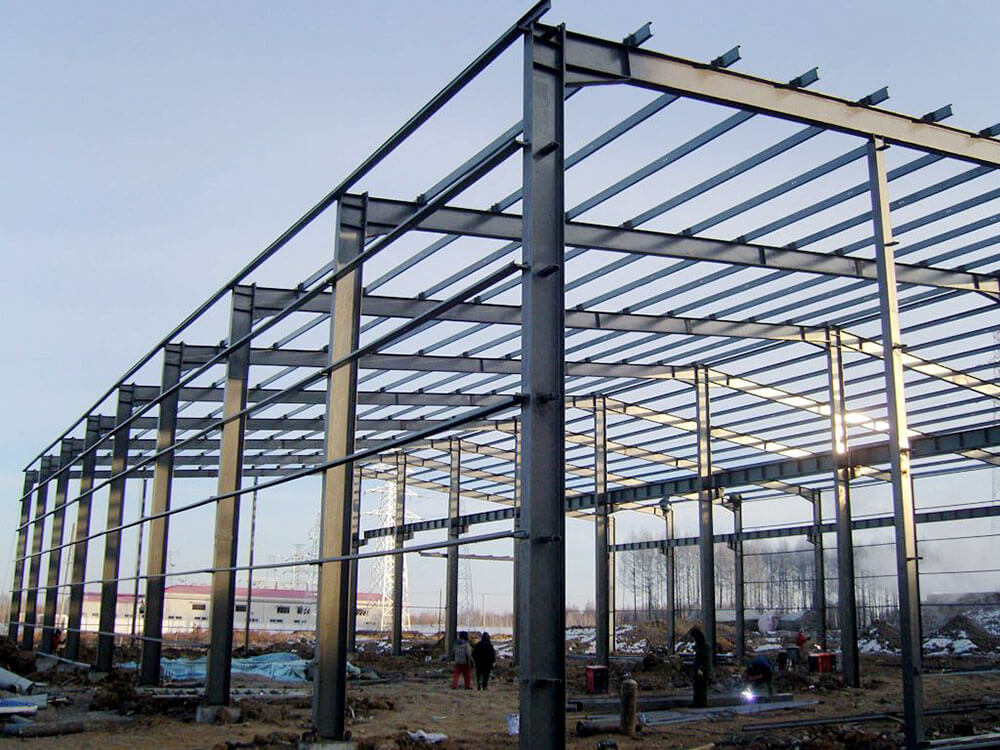
Steel structures are the backbone of modern industrial construction, providing strength, durability, and versatility for a wide range of applications. From warehouses and factories to bridges and power plants, steel structures offer efficient solutions for industrial needs, ensuring safety, reliability, and cost-effectiveness in construction projects.
Through our unwavering dedication to safety, quality, and meeting project deadlines, we aim to establish ourselves as a trusted partner for industrial projects.